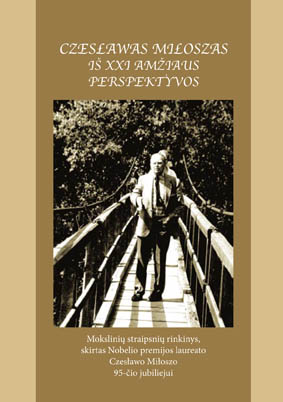Senojo Vilniaus žiniuonio ir pranašo nuo Nevėžio susitikimas filmavimo aikštelėje
Tadeusz Konwicki’s Film Adaptation of the Issa Valley
Author(s): Nina Taylor-TerleckaSubject(s): Literary Texts
Published by: Vytauto Didžiojo Universitetas
Keywords: Czesław Miłosz; Tadeusz Konwicki; konferencija; conference; Kaunas
Summary/Abstract: When Czesław Miłosz received the Nobel Prize for Literature in 1980, Tadeusz Konwicki was invited to make a screen version of The Issa Valley, a novel based on the laureate’s childhood spent on the banks of the Niewiaża river. One of Poland’s best-known novelists, whose fictional narratives have often been likened to film scripts, Konwicki also had a number of striking authorial films to his credit. Yet, although his novels often address the private hinterland of his childhood spent in the province of Wilno, he had never touched on a “Lithuanian” theme in his films. It was no small task. Acclaimed as a literary masterpiece, ThThThe Issa Valley had been variously defined as the amalgam of a Manichean treatise and a conventional Eastern borderlands novel, a living tribal fairy-tale from the crossroads of anthropology, sociology, history and memoir-writing, and an epiclyrical memory-book related to the great works of Joyce, Musil and Proust. It has also been seen as a literary exemplification of Apocatastasis, when “each object has a double duration. Both in time and when time will be no more”. For the screen-play Konwicki selected crucial episodes of existential drama that disrupt the calendar of rural life. Whereas his authorial films draw on oneiric collage and associational montage, it is chiefly painting that informs the aesthetics of his Issa Valley, seamlessly blending realistic scènes de genre in the Dutch manner, the lighting effects of Le Nain and La Tour, hunting scenes, dreamscapes in the romantic vein, naturalist sequences of woodland glades etc. Konwicki furthermore breaks up the filmic sequence with recitations of Miłosz’s poems, and fleeting intrusions of history and the present time, thus generating several realities or time scales, framed by work on the film-set, and punctuated by modern melodies. The result is a great clash of chiaroscuro, as the luminous shots of rural Arcadia are violently juxtaposed with the deep night of a two-dimensional, urban America, which serves as backdrop to the recitation, both heightening and refuting fairy-tale reality.
Journal: Česlovo Milošo skaitymai
- Issue Year: 2007
- Issue No: 1
- Page Range: 112-123
- Page Count: 12
- Language: Lithuanian

